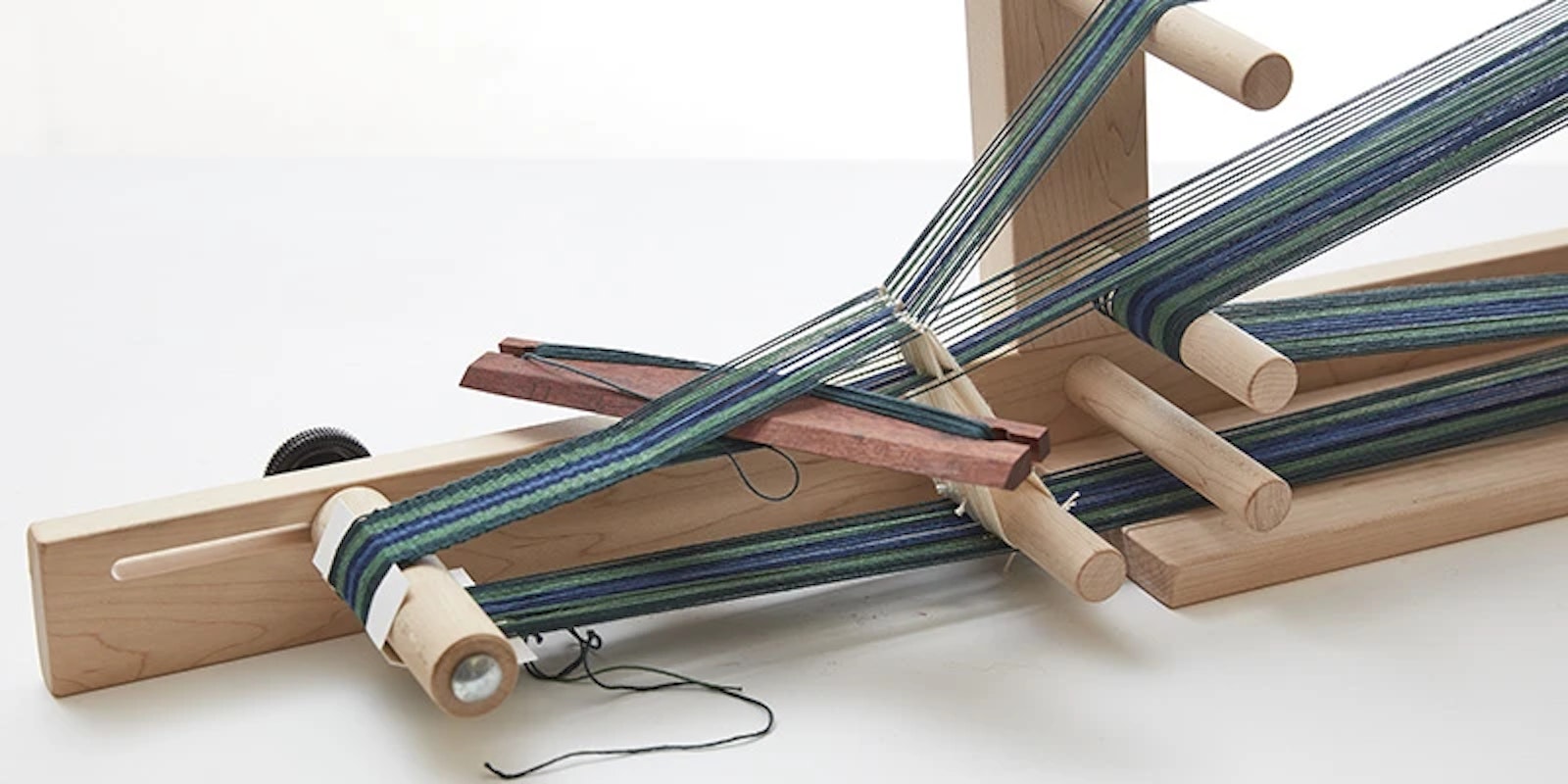Our upcoming January/February issue of Handwoven focuses on weaving with silk. Silk delivers shine and drape, warmth, and strength all in one beautiful package, but many of us worry about the cost or whether our weaving skills are up to the challenge of often-fine silk threads. Yet silk weavers such as Tien Chiu will tell you that silk can be pleasurable and cost-effective to weave with, and the results more than justify the effort. Here's Tien to tell you about her love affair with silk. ––Anita
I love silk. To me, it's the perfect fiber. It's lustrous and strong, with delicious drape. It is warm, but not overly so. It's not fussy to warp or weave, and it dyes beautifully, either with acid dyes or with fiber-reactive dyes and soda ash. Because of its strength, silk is ideal for fine-thread weaving, both as warp and as weft. And silk has been associated with luxury textiles for thousands of years.
I started my journey into weaving with silk. My very first project—a hand-dyed rainbow shawl—was woven with a 50% silk/ 50% wool yarn. It made the softest, most wonderfully drapey shawl, behaved beautifully during warping and weaving, and I just loved it despite the many mistakes I made while weaving it. My next project, a silk scarf, was woven from 20/2 silk. Silk soon became my favorite fiber.
 | |
| Closeup of Tien's handwoven silk wedding dress. |
So when I decided to weave my wedding dress, what was my choice of fiber? Silk, of course! I put on the longest warp I'd done to the point—20 yards of 60/2 silk—and wove yards and yards of fine silk cloth for my wedding ensemble.
I spent over a thousand hours weaving, designing, and sewing the dress, weaving Chinese symbols for a happy marriage into the cloth and embellishing it with imported French lace and pale pink Akoya pearls. The result was a true heirloom which is now part of the permanent collection at the American Textile History Museum.
I also love dyeing silk. Silk is unique among fibers in that it can be dyed using either acid dyes or fiber-reactive dyes with soda ash (a process normally used on cellulose fibers). This gives me a wide choice of methods for dyeing silk—I can use virtually any dye technique meant for natural fibers, from batik to silk painting to katazome.
 | |
| Closeup of Tien's Kodachrome Jacket. Photos by Joe Decker |
When I made my Kodachrome Jacket (featured in the September/October 2011 issue of Handwoven), I chose silk, and painted narrow bouts with rainbow-colored fiber-reactive dyes, then offset the bouts when weaving to produce a gloriously colorful cloth.
The one drawback to silk is its expense. Since it retails for over a hundred dollars a pound, I rarely make heavy fabrics from silk. Instead, I weave fine threads into exquisite small pieces, producing beautiful heirlooms while minimizing my costs. Silk is great for fine-thread projects because it is so strong. My In the Inferno: Firebirds! scarf is woven from 140/2 and 60/2 silk at 72 ends per inch, and weighs no more than an ounce or two. (I had to bead the ends to keep it from floating away!) But because the silk warp was so strong, I broke very few threads while weaving.
In this issue of Handwoven, I've given some tips and tricks for weaving with fine threads, and a small project in fine silks to get you started. I hope you become as addicted to silk as I have—it's a wonderful fiber!
—Tien Chiu

